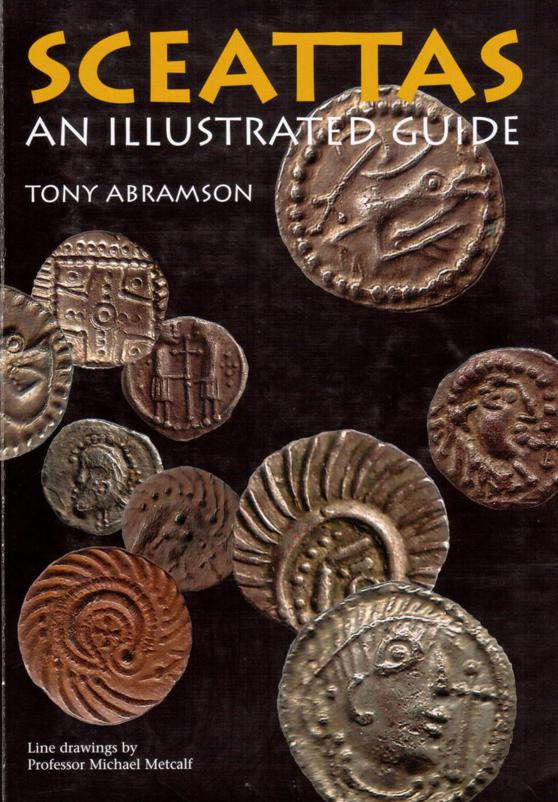Sceattas: An Illustrated Guide
Short-listed for the inaugural North Book Prize
Review
by Brett Hammond of TimeLine Originals for Treasure Hunting
Magazine
As seems to be the case with many fellow detectorists, my library tends to grow with the variety of coins and artefacts in my small collection. I had not found any sceattas until quite recently.
That’s why I had no book on them, and why I didn’t buy this book when it was first published a couple of years ago. But now that I’ve found two or three of these fascinating coins, I’m very glad that
eventually I also found this book, especially after failing to identify my finds correctly with other titles that deal with the subject much less comprehensively. Now I feel that I ought to declare,
“This is the only book on sceattas any detectorist will ever need.” But that would be presumptuous, so I will chose my words with a little less arrogance and say, “Until detectorists find another few
hundred previously unrecorded sceattas, this is the only book on the subject you need to buy,”
I’m sure that your first impression, if you do as I did and thumb-flick the pages, will be highly favourable. The ultra-sharp black-and-white photographs, supported as they are by numerous excellent
line drawings from Professor Michael Metcalf of the Ashmolean Museum, will have you rummaging in your own collection and eagerly trying to match their designs with those on the page. With close on
2,000 illustrations to delight your eyes you will certainly be grateful for the author’s decision to place many sceattas in more than one of his classification categories. As he explains, a coin may
appear in more than one section. For example, E750 has a quilled crescent with gaping mouth curling over what appears to be a rosette. The reverse has an unusual degenerate standard with crescents
concave to the corners. Therefore it appears in five sections: quilled figures, rosettes, serpents, standards and torcs. Don’t worry if this sounds as though it might prove complicated; he adds a few
lines later: All of these permutations are later cross-referenced in a separate section [..] Contents - Tracking [which] lists all of the coins illustrated by subdivision. Some of the text sections
of this erudite work are obviously written for advanced numismatists and archaeologists. But the author make very clear his aim to help non-academics to enjoy the results of his research when he
writes: A word on how this book should be used: given that the reader can identify a design on his sceat, this motif should match one (or more) of the illustrated section headings, for example,
Animals, Birds, Serpents, etc. There are 16 such headings, [with] each section subdivided further. [...] The intention is to allow visual recognition before descriptions need to be read to verify the
minor details. Following the author’s instructions I was able to identify my own sceats in a very short time .. though I don’t deny that I then spent a lot of time burrowing deeper into the 166 pages
and delighting to think that very many of the sceattas on display were found by fellow detectorists. Every one of us ought to thank Tony Abramson personally for working so hard to bring this book to
market. You can repay him in a small way by adding your own copy to your private library. With hindsight I wish I had not waited so long to obtain a copy.
166 p. p/b © Tony Abramson, 2006. Heritage Marketing & Publications Ltd.

